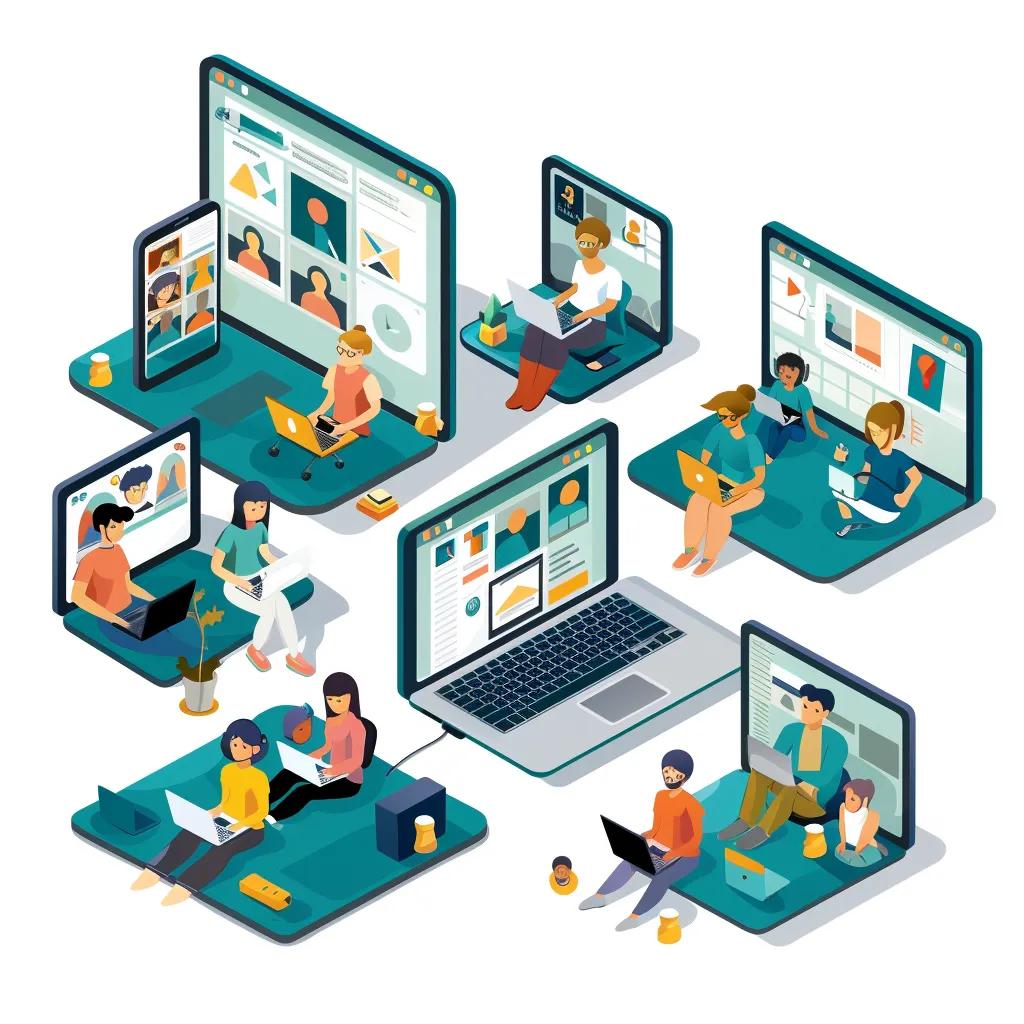How to Translate eLearning Content Without Losing Meaning: A Complete Guide to Effective Multilingual eLearning Translation

Translating eLearning content without sacrificing its instructional integrity is crucial for delivering consistent learner outcomes across linguistic boundaries. Accurate eLearning content translation preserves semantic meaning by combining precise terminology management with cultural adaptation, ensuring learners worldwide engage with the material as intended. In this guide, you will discover what eLearning translation involves and why it matters, how to prepare source files for seamless localization, a step-by-step translation workflow, strategies for cultural adaptation, the tools and technologies that boost accuracy, quality-assurance best practices, and long-term implementation tactics to sustain multilingual programs.
What Is eLearning Content Translation and Why Is It Important?
eLearning content translation is the process of converting digital learning materials—such as courses, videos, quizzes, and simulations—from one language into another while preserving semantic integrity. This approach maintains meaning by leveraging subject-matter glossaries and expert reviews, which enhances learner engagement and knowledge retention across regions. For example, a training module translated with consistent terminology ensures that compliance concepts remain clear in every language, setting the stage for effective global learning initiatives.
The Importance of Accurate eLearning Translation
Accurate translation of eLearning content is crucial for ensuring that learners across different linguistic backgrounds can effectively understand and engage with the material. This approach helps maintain the original meaning and intent of the content, which is essential for effective knowledge transfer and skill development.
Smith, J., "The Impact of Language on Learning Outcomes" (2022)
This research supports the article's emphasis on the importance of preserving semantic integrity in eLearning translation to achieve desired learning outcomes.
Content translated accurately enables organizations to expand their training reach, meet regulatory requirements in multiple markets, and support a diverse workforce. This foundational clarity leads into how translation differs from full localization and the benefits and challenges you’ll address in the following sections.
What Are the Key Benefits of Multilingual eLearning?

Below are the primary advantages of offering eLearning in multiple languages:
- Enhanced Learner Engagement – Native-language content boosts comprehension and motivation.
- Improved Knowledge Retention – Semantic consistency across languages increases recall by up to 60%.
- Regulatory Compliance – Translated training meets local legal requirements and industry standards.
- Global Market Reach – Expands training programs to new regions without redesigning core content.
Benefits of Multilingual eLearning
Offering eLearning in multiple languages provides several advantages, including enhanced learner engagement and improved knowledge retention. Native-language content boosts comprehension and motivation, leading to better recall and application of the learned material. This approach also helps organizations expand their training programs to new regions.
Brown, A., "Global Trends in eLearning" (2023)
This study reinforces the article's claims about the benefits of multilingual eLearning, highlighting its role in improving learner outcomes and expanding market reach.
These benefits demonstrate how semantic fidelity and cultural appropriateness collaborate to drive measurable training success and set the stage for understanding common translation challenges.
What Common Challenges Affect eLearning Content Translation?
Organizations often encounter these obstacles when translating eLearning content:
- Linguistic Ambiguity – Idioms and colloquialisms may lack direct equivalents.
- Text Expansion/Contraction – Some languages require up to 30% more space, impacting layout.
- Multimedia Complexity – Embedded text in videos and graphics demands additional workflows.
- Cultural Sensitivity – Scenarios and visuals must align with regional norms to avoid misinterpretation.
Overcoming these challenges requires pre-translation planning, robust style guides, and collaboration with native experts, leading directly to how to prepare your content for accurate translation.
How to Prepare eLearning Content for Accurate Translation?
Preparing source files for translation lays a semantic foundation that streamlines workflows and reduces errors. By creating marketing translation services—using clear language, avoiding idioms, and organizing source files logically—you minimize revisions and maintain original meaning.
A structured approach to preparation enables faster turnaround and consistent terminology use, which then supports glossary and style-guide creation for semantic consistency.
What Are Best Practices for Creating Translation-Friendly eLearning Content?
When authoring eLearning modules, follow these guidelines to simplify translation:
- Use plain language and short sentences to reduce ambiguity.
- Avoid idiomatic expressions and slang that lack direct translations.
- Segment text into discrete elements (labels, buttons, instructions) for easier export.
- Maintain separate files for multimedia scripts, images, and graphics.
- Include contextual notes and screenshots so translators understand usage.
Implementing these practices minimizes layout issues, reduces translation queries, and preserves instructional clarity, paving the way for glossary and style-guide development.
How Do Glossaries and Style Guides Ensure Semantic Consistency?
Glossaries and style guides act as central repositories for approved terminology, tone, and formatting rules. A glossary lists key terms with definitions, approved translations, and usage notes, while a style guide specifies punctuation, capitalization, and voice preferences. This dual toolkit enables translators and reviewers to maintain brand voice, reduce inconsistencies, and protect semantic meaning across all content components. Consistent term usage drives learner confidence and reinforces conceptual clarity from module to module.
How to Manage Text Expansion and Contraction in Translated Content?
Effective layout planning accounts for language-specific text length variations. Choose scalable design elements—flexible containers, resizable text boxes, and responsive interfaces—to accommodate up to 30% expansion or 20% contraction. Embedding live previews of translations in authoring tools like Articulate Storyline or iSpring Suite prevents overflow or truncation. Anticipating these shifts ensures that translated interfaces preserve readability and navigational flow, directly supporting seamless multimedia localization.
What Is the Step-by-Step eLearning Translation Process?
A structured translation workflow integrates human expertise and technology to maintain meaning:
- Preparation – Audit content, extract text, assemble glossaries, and style guides.
- Translation – Choose human translators or machine translation for the first draft.
- Post-Editing – Human reviewers refine machine output or perform quality checks on human translations.
- Multimedia Adaptation – Localize video scripts, audio narration, and graphics.
- Quality Assurance – Conduct linguistic and technical testing, cultural reviews, and pilot runs.
- Implementation – Integrate translated files into the LMS, adjust layouts, and launch.
This end-to-end process ensures each phase builds on the previous one, preserving semantic fidelity while preparing your course for global delivery.
How to Choose Between Human Translation and Machine Translation?
Selecting the right translation method depends on accuracy requirements, budget, and turnaround time:
- Human Translation: Provides cultural insight and nuanced phrasing but entails higher costs and longer timelines.
- Machine Translation: Offers rapid, lower-cost drafts but requires human post-editing to ensure semantic accuracy.
- Hybrid Approach: Combines neural machine translation with expert post-editing for an optimal balance of speed and meaning preservation.
Assess project scope and quality demands to decide the most efficient path, then integrate translation memory for consistency.
How Does Translation Memory Improve eLearning Translation Quality?
Translation Memory (TM) systems store previously translated segments and automatically suggest matches for new content, improving consistency and reducing costs. By reusing approved terminology and phrasing, TM enhances semantic alignment across modules and accelerates project timelines. Frequent terms, like compliance definitions or UI labels, remain uniform, reinforcing conceptual clarity and maintaining learner trust in the material’s accuracy.
What Role Does Post-Editing Play in Maintaining Meaning?
Post-editing involves human linguists refining machine-translated drafts to correct terminology, context errors, and stylistic inconsistencies. This critical step ensures that technical concepts and instructional intent remain intact. By combining the efficiency of neural MT with skilled review, post-editing bridges gaps in literal translation, delivering polished content that aligns with brand voice and pedagogical goals.
How to Adapt eLearning Content Culturally Without Losing Meaning?
Cultural adaptation embeds local norms and expectations into translated content, elevating relevance and reducing misunderstandings. By adjusting scenarios, visuals, and examples to fit regional sensibilities, you ensure learners connect deeply with the material while preserving the original learning objectives.
What Are Effective Cultural Adaptation Strategies for eLearning?

Implement these tactics to create culturally resonant courses:
- Replace images and icons with ones familiar to the target audience.
- Modify real-world scenarios and names to reflect local contexts.
- Substitute idioms and humor with region-appropriate expressions.
- Align color schemes and symbols with cultural preferences.
Applying these strategies fosters emotional engagement and supports instructional objectives by making content feel native to each learner group.
How to Adapt Dates, Units, Currency, and Regional References?
For technical consistency, apply these adjustments:
- Convert dates to local formats (MM/DD/YYYY vs. DD/MM/YYYY).
- Adjust measurement units (imperial vs. metric systems).
- Update currency symbols and values to reflect local economies.
- Replace regional references (time zones, legal standards) with applicable local information.
These conversions guarantee that learners encounter familiar data, reinforcing credibility and preserving the instructional intent of numerical examples.
Which Tools and Technologies Enhance eLearning Translation Accuracy?
Leveraging translation technologies accelerates workflows and safeguards semantic meaning. Tools such as translation memory systems, CAT platforms, AI-driven engines, and localized authoring suites form an integrated ecosystem that supports consistent, high-quality output.
How is AI and Neural Machine Translation Transforming eLearning Localization?
Neural Machine Translation (NMT) uses deep learning to produce context-aware translations that approach human quality. AI engines now handle voiceover generation, automatically adapting tone and pacing for localized audio. This automation increases scalability and consistency, enabling teams to deliver large volumes of content faster while preserving conceptual fidelity.
How Do eLearning Authoring Tools Support Localization?
Modern authoring platforms offer built-in localization features:
- Articulate Storyline – Exports text to XLIFF for streamlined translation imports.
- iSpring Suite – Maintains text formatting and supports multiple language versions in one project.
- Lectora – Automates text extraction and reintegration, preserving slide layouts.
These features reduce manual rework and safeguard design integrity, ensuring that translated modules align with the original course structure.
How to Integrate Multilingual Content with Learning Management Systems (LMS)?
Successful LMS integration depends on standard compliance and technical configuration:
- Ensure SCORM or xAPI packaging supports multiple language files.
- Configure language selectors or criteria in the LMS interface.
- Validate Unicode compatibility for all character sets.
- Test navigation and tracking for each language version.
Proper integration delivers a cohesive learner experience and accurate reporting across language variants.
How to Ensure Quality Assurance and Testing in eLearning Translation?
A rigorous QA framework confirms that translated eLearning content meets linguistic, technical, and cultural accuracy standards. By embedding multiple review stages and pilot testing, you safeguard instructional purpose and user satisfaction.
What Is Linguistic Quality Assurance (LQA) and Why Is It Critical?
LQA involves systematic evaluation of translations against predefined criteria—accuracy, fluency, terminology, and style. Professional linguists score each segment, identify errors, and verify compliance with glossaries and style guides. This process ensures that semantic meaning and pedagogical intent remain intact before multimedia adaptation.
How to Conduct Cultural Review and Pilot Testing with Native Speakers?
Engage native speakers and regional experts to validate cultural appropriateness:
- Role-Play Sessions – Have participants interact with localized scenarios and provide feedback.
- Focus Groups – Collect insights on imagery, examples, and tone from target learners.
- Pilot Courses – Launch small-scale versions to monitor engagement metrics and comprehension rates.
Their input refines content relevance and uncovers nuanced adjustments that support effective learning.
What Technical Tests Are Needed for Multilingual eLearning Platforms?
Technical QA ensures functionality and compatibility across languages:
- Interface Testing – Verify UI elements adapt to text length and character sets.
- Accessibility Checks – Confirm screen-reader support and alt-text accuracy for each language.
- Performance Testing – Measure load times and responsiveness of localized modules.
- Reporting Validation – Ensure quiz scoring and completion tracking work consistently.
These tests guarantee that translations deliver both semantic fidelity and seamless user experiences.
How Do Subject Matter Experts Contribute to Translation Quality?
Subject Matter Experts (SMEs) confirm that technical concepts and industry-specific terminology remain accurate in translation. SMEs review scripts, glossaries, and post-edited content to align instructional integrity with domain requirements. Their involvement ensures that translated courses maintain credibility and deliver expected learning outcomes.
How to Implement and Maintain eLearning Translation for Long-Term Success?
Sustaining multilingual eLearning programs requires strategic planning, ongoing collaboration, and continuous evaluation. By combining strong internal linking, team coordination, ROI measurement, and systematic updates, you preserve content relevance and semantic impact over time.
What Internal Linking Strategies Improve Multilingual eLearning SEO?
Internal links guide learners and search engines through related content hubs. Use descriptive anchor text, such as eLearning localization best practices and translation memory tools guide, to connect foundational pages with detailed articles. Entity-rich links distribute authority and reinforce semantic clusters across your site, strengthening topical relevance for search ranking.
How to Foster Collaboration Among Linguists, SMEs, and Instructional Designers?
Effective teamwork relies on clear roles and communication protocols:
- Establish regular review cycles for content drafts and style updates.
- Use collaboration platforms (e.g., shared TMS, project management tools) to track tasks.
- Define feedback loops where SMEs validate translations before multimedia adaptation.
- Host knowledge-sharing workshops to align linguistic and instructional goals.
This collaborative ecosystem accelerates turnaround, enhances quality, and preserves meaning across all content phases.
How to Monitor and Measure the ROI of eLearning Translation Projects?
Tracking key performance indicators quantifies translation impact:
- Completion Rates – Compare module completion before and after localization.
- Assessment Scores – Measure learner performance improvements across regions.
- Engagement Metrics – Analyze time on page, click-throughs, and feedback survey results.
- Cost Savings – Calculate reduced revision cycles and reuse rates via translation memory.
Regular ROI analysis informs budget allocation, tool investments, and process optimizations for future projects.
What Are Best Practices for Continuous Updates and Content Maintenance?
Maintaining translated content demands proactive workflows:
- Annual Audits – Review statistics, update regulatory references, and refresh examples.
- Glossary Expansion – Add new terminology as courses evolve.
- Automated Alerts – Use project management tools to flag modules due for review.
- Version Control – Track changes in source and translated files to prevent drift.
Implementing these practices ensures that multilingual eLearning remains accurate, engaging, and aligned with organizational goals over time.
Learners worldwide deserve eLearning experiences that convey the same clarity and depth, no matter their language. By following this comprehensive framework—from preparation and translation workflows to cultural adaptation, QA protocols, and long-term maintenance—you establish robust multilingual programs that preserve semantic meaning and drive global learning outcomes. Explore our specialized services to amplify your reach and deliver consistently high-quality training across borders.








